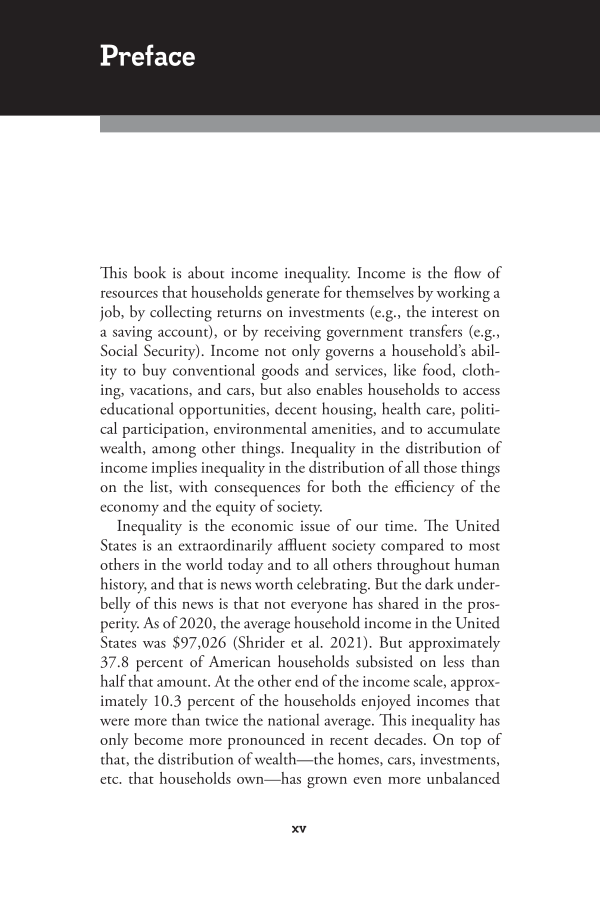xv Preface This book is about income inequality. Income is the flow of resources that households generate for themselves by working a job, by collecting returns on investments (e.g., the interest on a saving account), or by receiving government transfers (e.g., Social Security). Income not only governs a household’s abil- ity to buy conventional goods and services, like food, cloth- ing, vacations, and cars, but also enables households to access educational opportunities, decent housing, health care, politi- cal participation, environmental amenities, and to accumulate wealth, among other things. Inequality in the distribution of income implies inequality in the distribution of all those things on the list, with consequences for both the efficiency of the economy and the equity of society. Inequality is the economic issue of our time. The United States is an extraordinarily affluent society compared to most others in the world today and to all others throughout human history, and that is news worth celebrating. But the dark under- belly of this news is that not everyone has shared in the pros- perity. As of 2020, the average household income in the United States was $97,026 (Shrider et al. 2021). But approximately 37.8 percent of American households subsisted on less than half that amount. At the other end of the income scale, approx- imately 10.3 percent of the households enjoyed incomes that were more than twice the national average. This inequality has only become more pronounced in recent decades. On top of that, the distribution of wealth—the homes, cars, investments, etc. that households own—has grown even more unbalanced
Document Details My Account Print multiple pages
Print
You have printed 0 times in the last 24 hours.
Your print count will reset on at .
You may print 0 more time(s) before then.
You may print a maximum of 0 pages at a time.



































































































































































































































































































































































































































